Many animals statues and themes are seen throughout the temple grounds and hopefully this list can be helpful.
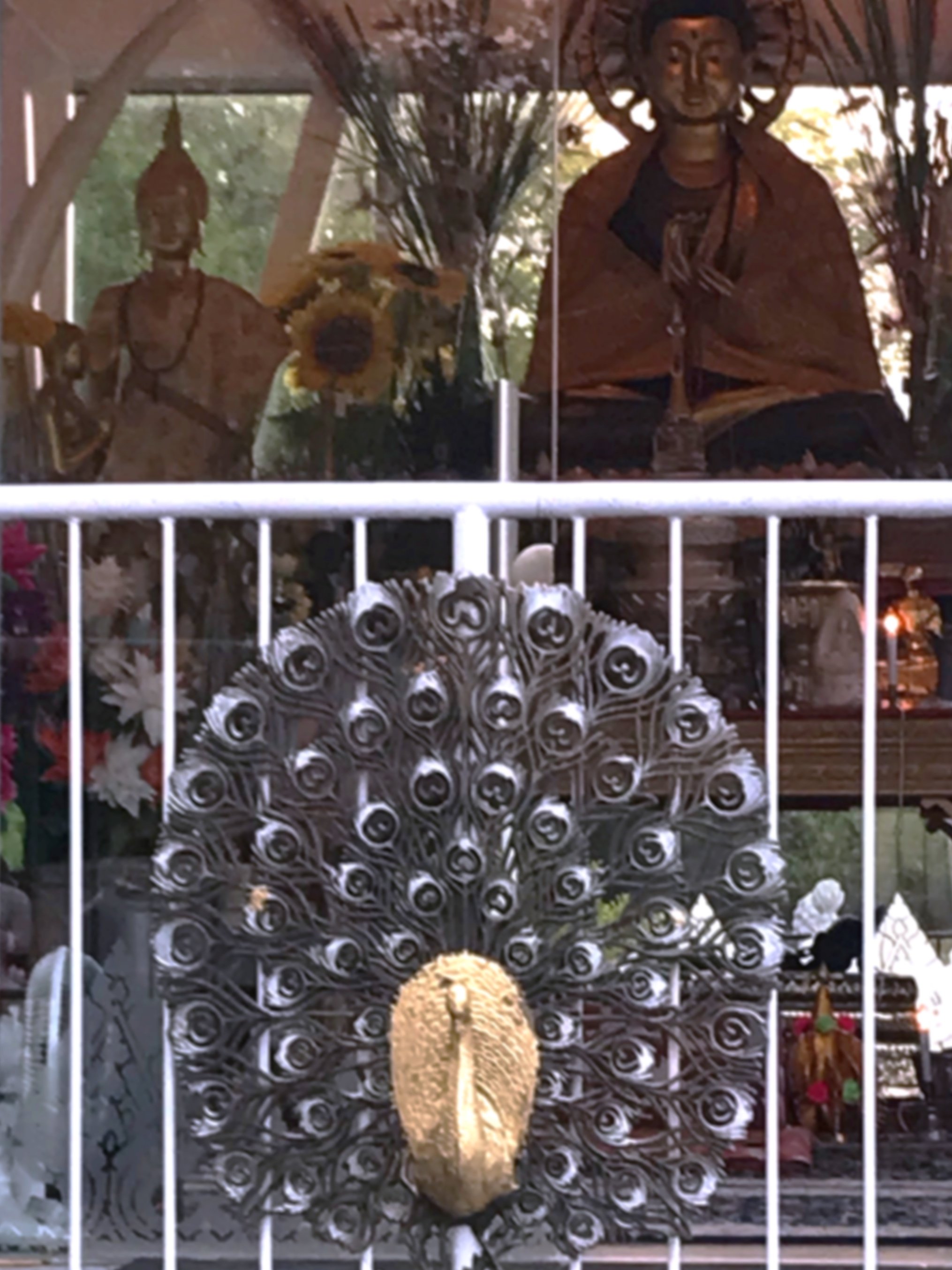
Moro means Peacock in Pālī and represents the Buddha's many colors of light around the Buddha's head. There is also a Parittā (protective chant) called the Moro Parittā that the monks at this temple chant when blessing water, homes, amulets, and bracelets for devotees.
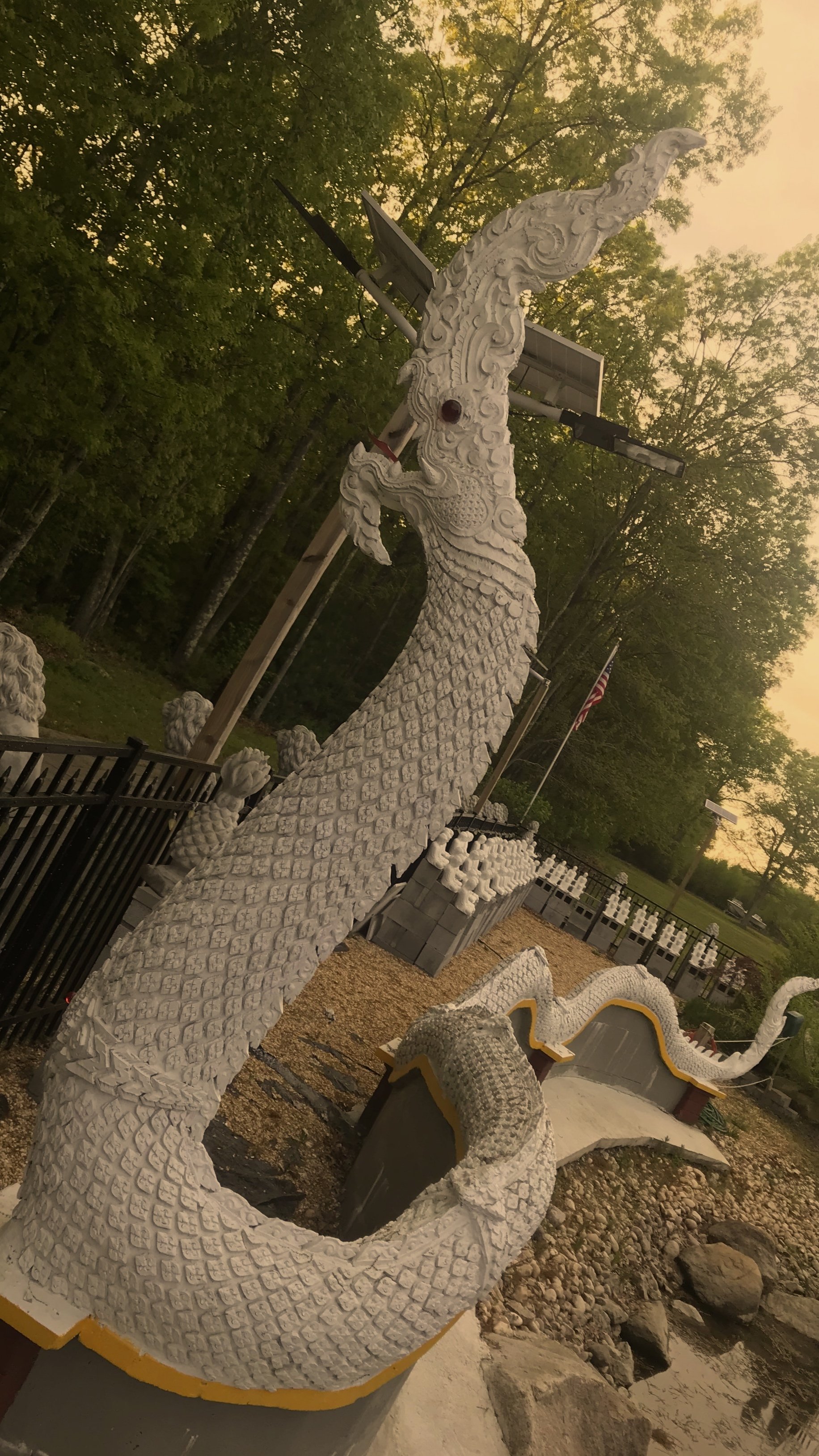
Nagas are a serpent-dragon class that are just above the Animal Realm and are in the Asura "Ugly Gods/Titans" Realm. They're usually guardians of treasures and temples.
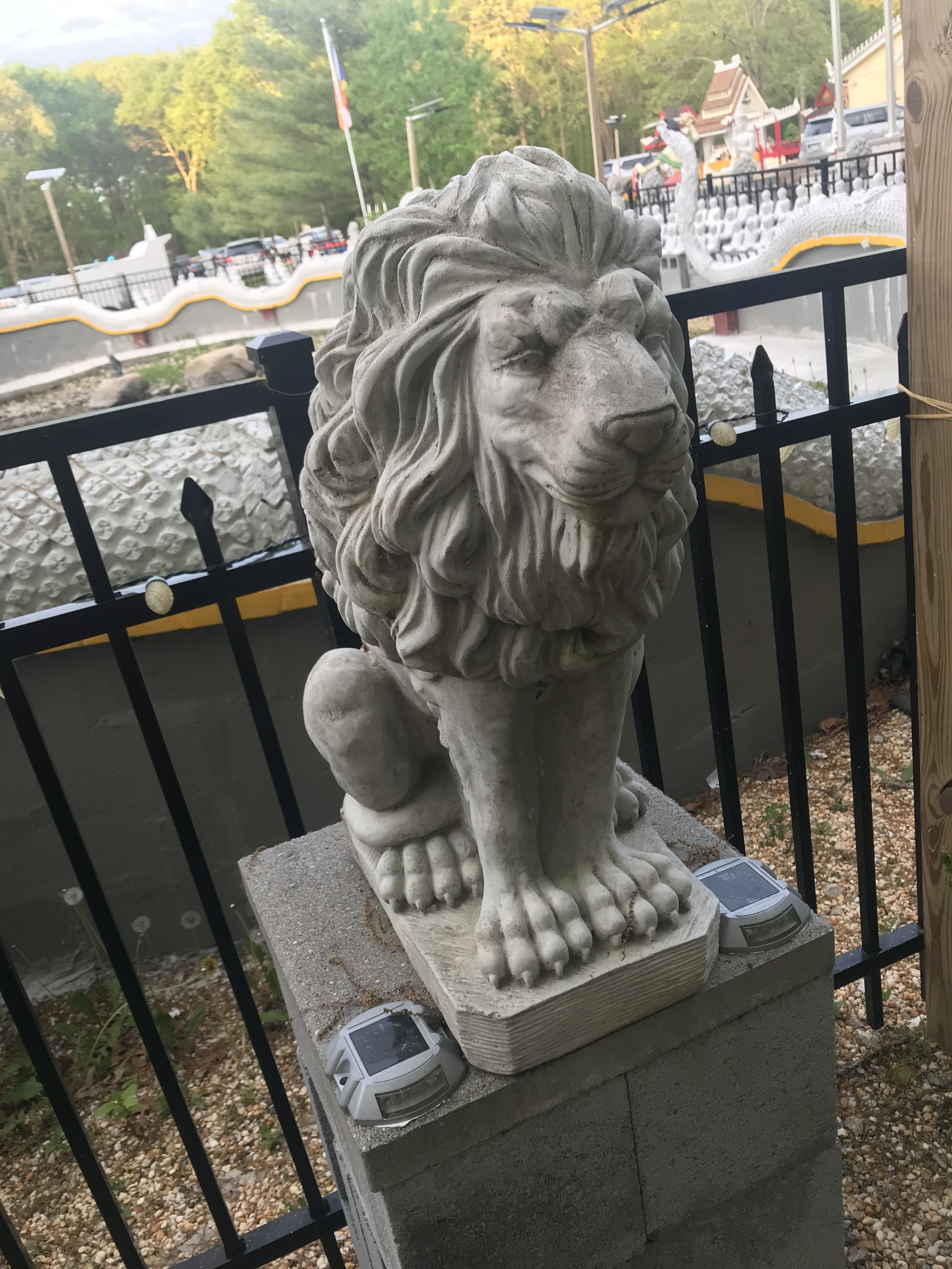
The lion is referenced many times in old Buddhist texts and it referred to the Buddha's voice due to its far-reaching, clear and loud qualities, without the use of microphones and speakers. The lion's pose is also one of the Buddha's meditation poses (laying to one side).

Elephants signify royalty throughout the southeast asian countries. However, there is huge significance to rare albino/white elephants because Buddha's birth-mother dreamt of one before the Buddha was to be born. So, although PETA may see this as abuse/cruelty, these replicas are only meant to revere an animal that has many ties to the Buddha's birth and royal lineage.

This statue is iconic to the Buddha's story as this depicts the Pālī term, Khanti (patiently enduring), since this was when the Bhodisatta made an Adhittānā (determination) to find an end to suffering for the world. A Naga-King wanted to see Gautama make his goal, so the Naga gave Gautama a raised seat and coverage from the winds, rains and flooding from the monsoon season.
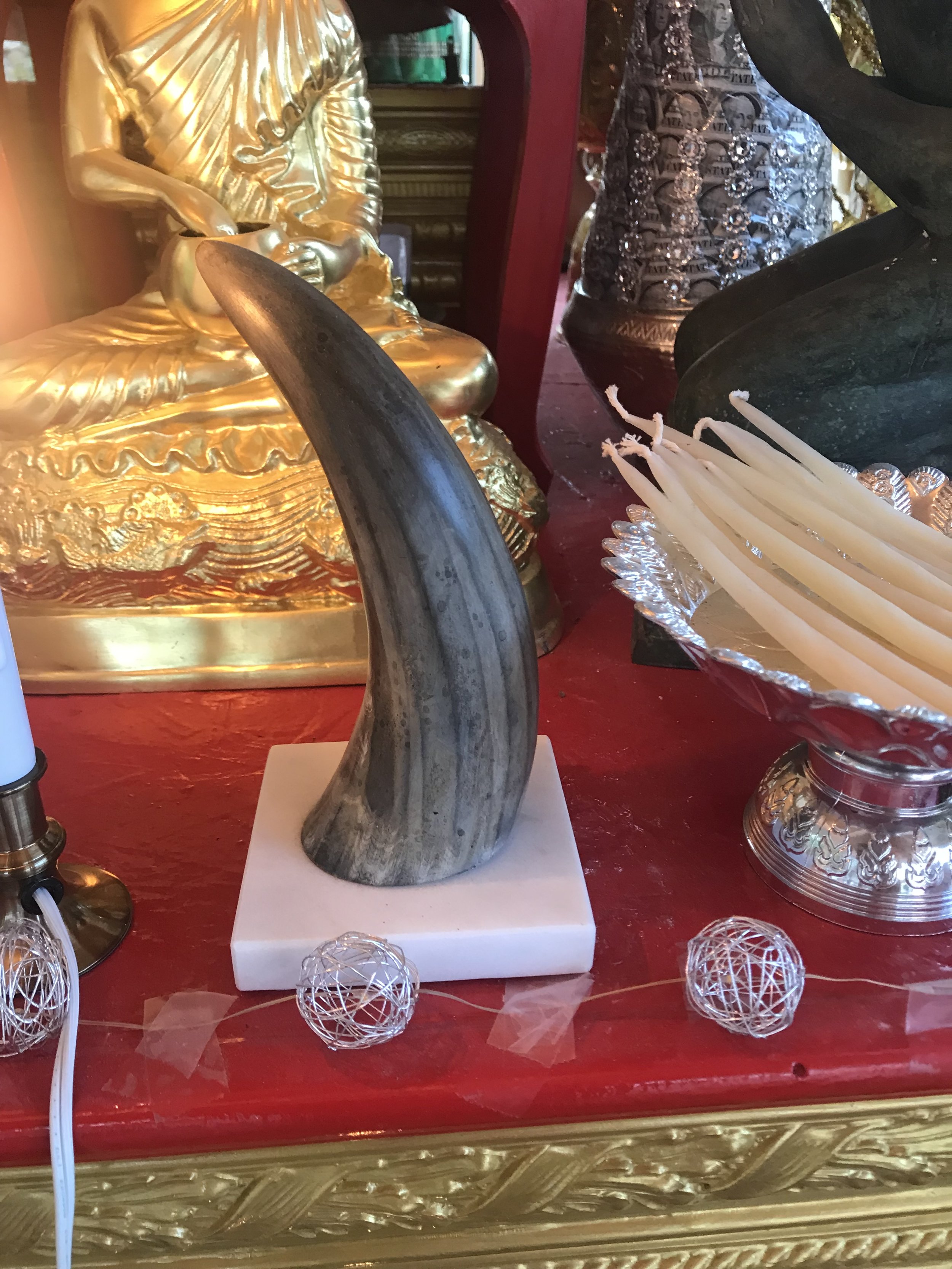
I assume this is also supposed to be an elephant horn? The stamping on the bottom of this item indicates it is a replica.
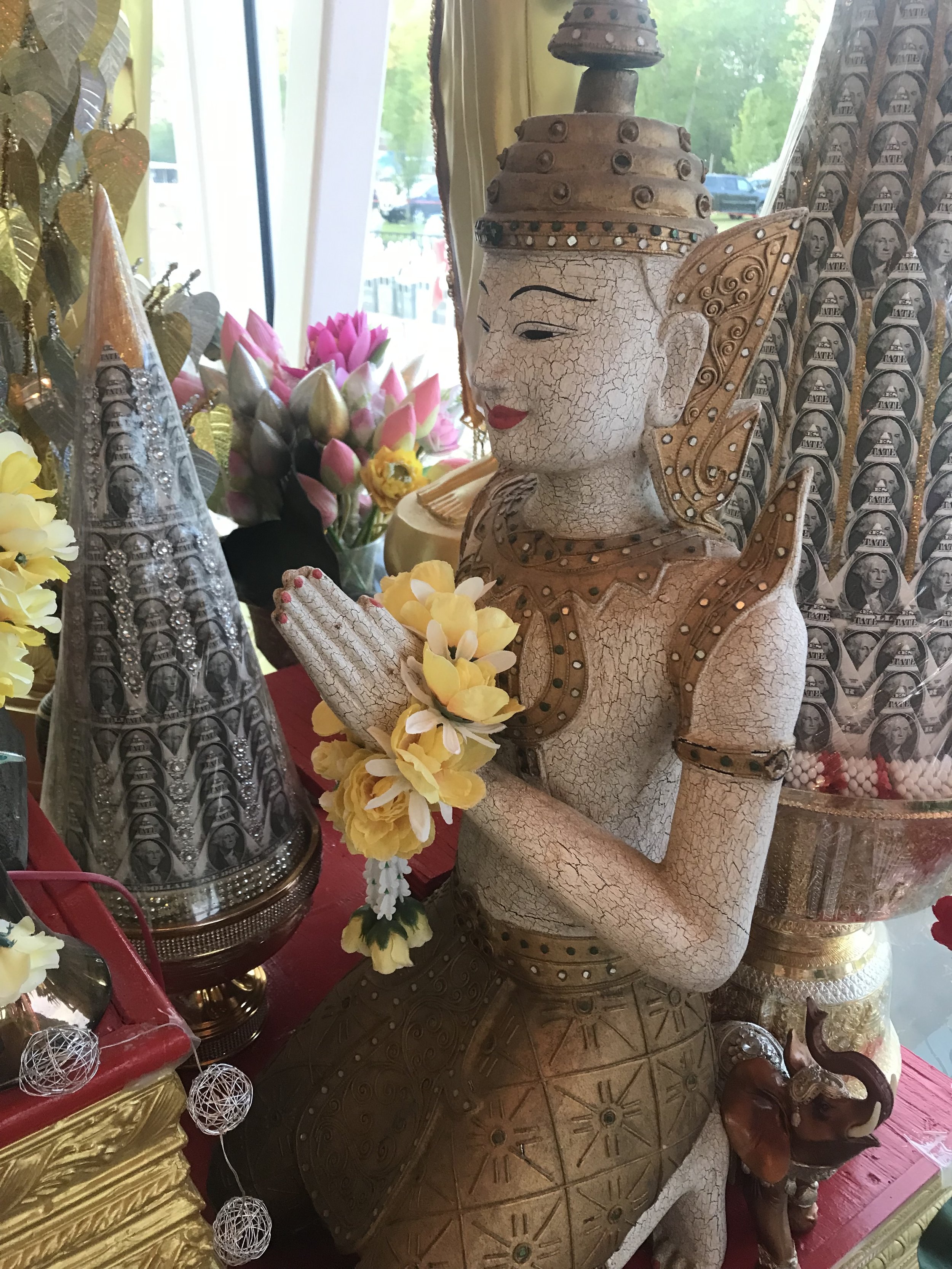
King Sākkhā, king of the Devas (Heavenly Beings) from the 2nd level (Tavatiṁsa Heaven also known as the Heaven of the 33's) of the Deva Realm, paying respects to the Buddha. King Sākkhā played many roles in seeing the Bodhisatta, Siddartha Gautama, become the Buddha.
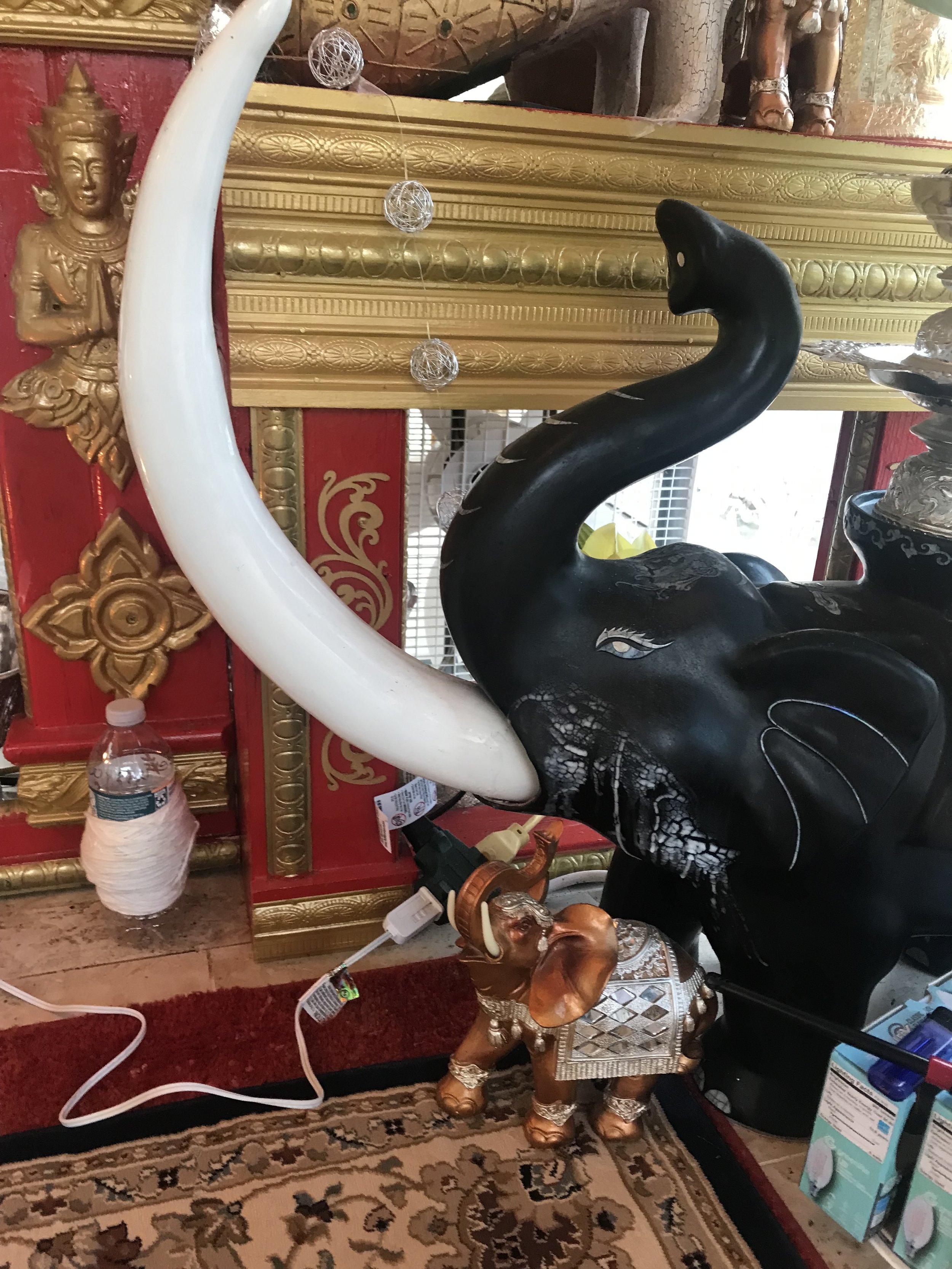
Another elephant statue to revere a royal animal repeatedly referenced with the Bodhisatta (One who makes a holy vow to become enlightened) and Buddha (self-awakened, fully-enlightened being.)

This emblem is on Laos' historic Royal Flag, which is no longer recognized by the United Nations. Laos' current flag is known as the "Moon Flag", which is currently recognized by the UN. The 3-headed elephant represented the nickname for the country - Meaung Lao Lanxang (Land of a Million Elephants).
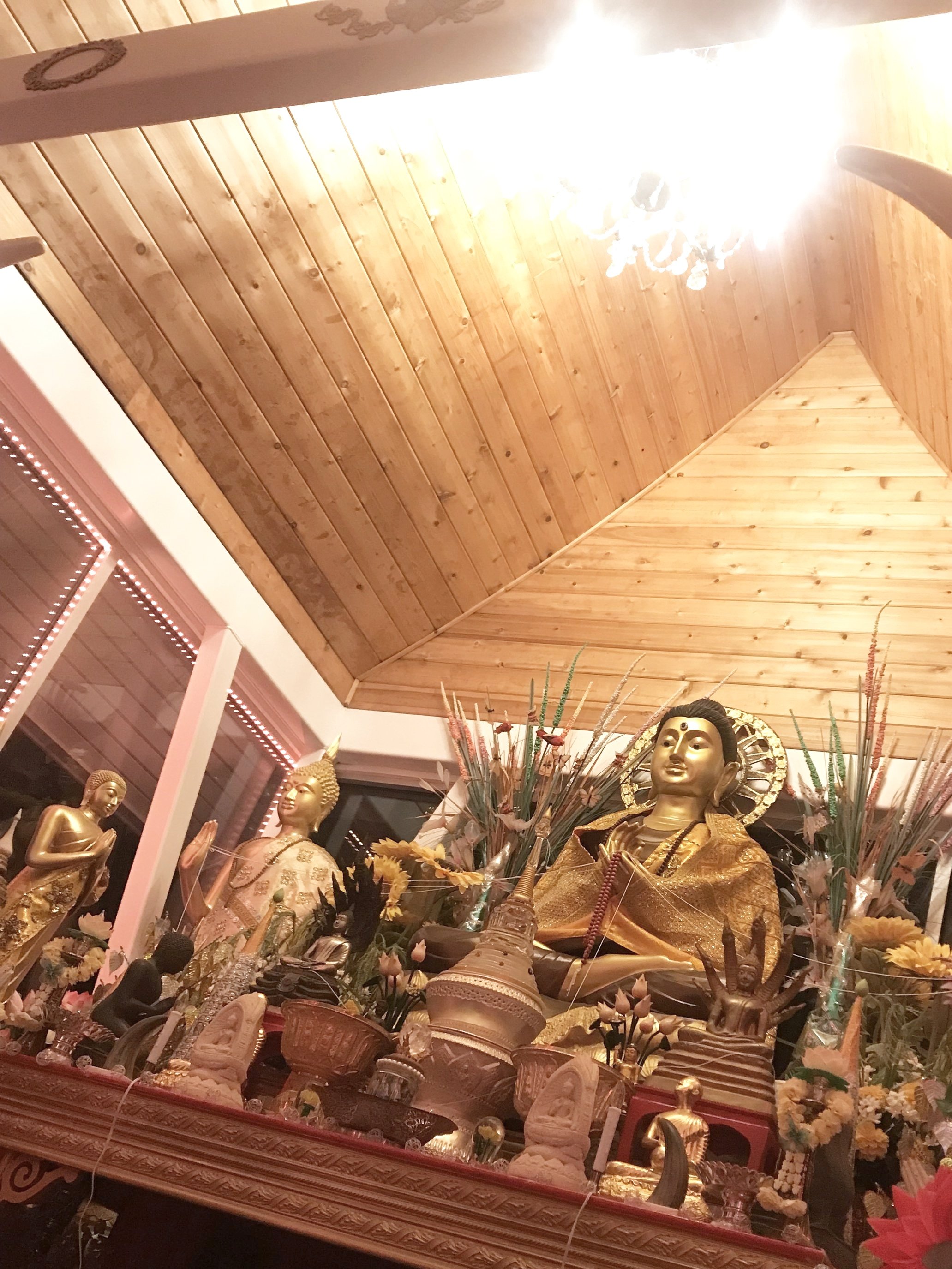
The large buddha is displaying a Mudra (hand gesture) called Vitarka. The Vitarka looks like the Buddha is signaling "OK" by having the index and pointer finger touch and the middle, ring and pinky point to the sky. Vitarka symbolizes the Buddha when teaching or discussing the Dhamma. Many Buddha statues with Vitarka Mudras are well placed in places of study like libraries. The Water Simma Shrine has this Buddha because the 227 Monastic Rules are learned, recited, and discussed here.

